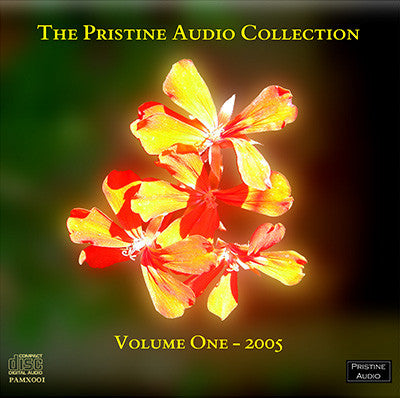
This album is included in the following sets:
This set contains the following albums:
- Producer's Note
- Full Track Listing
Although sometimes regarded as French, César-Auguste-Jean-Guillame-Hubert Franck (1822-1890) was actually of Flemish birth, and musically can be seen as of the Germanic tradition, most notably in his resolution of formal problems and the chromaticism of his harmony. If in his overall work there is some unevenness, his best music is unquestionably that of a man of genius.
The Symphonic Variations, scored for piano and orchestra, is generally Franck's happiest and most brilliant work. Written in 1885, it consists of a single movement of about fifteen minutes duration, and vies only with his symphony for the title of most-recorded orchestral work.
This particular interpretation is of particular interest. Recorded by Deutsche Grammophon Geschellschaft in 1943, it was later recalled with great affection and even admiration by the pianist Géza Anda, who wondered aloud how he could ever have played so well. In van Beinum he had an astute and senstive conductor, and the overall impression is quite ravishing.
The discs we've used for this transfer are also of interest. Rather than the standard DGG yellow label, we find a light blue label, ringed with the following: "MEISTERKLASSE DER DEUSCHEN GRAMMOPHON G.M.B.H - DAS RECHT ZUR RADIOSENDUNG BLEIST VORBEHALTEN". The label then states : "SEIMENS SPEZIAL - EXPERIMENTAL-SCHALLPLATTE NACH DEM SILBER-VERFAHREN DES ELEKTRO-AKOUSTISCHEN FORSCHUNGS-LABORITORIUMS". Each of the discs carries an additional message - in one case rubber-stamped, in the other a printed label stuck on, both reading: "Deutsche Grammophon GmbH, Hannover, Genehmigt 17.6.46, 30 Information Control Unit". The latter seems to suggest approval by post-war occupying forces.
We'd be most interested to know quite what the experimental processes were that DGG or Seimens were experimenting with at the time - one can guess from what was written that some kind of silver electro-plating might have been involved. As it was, the sound quality was good, but marred by a heavy hiss which has taken a lot of very careful work and processing to reduce to acceptable levels. This is particularly crucial in this work as there are a number of extended sections of very quiet playing; at these points it was at times very difficult to separate piano from hiss!
NB. When this recording was released on Pristine it was included on a compilation CD, since withdrawn, but never on its own CD. As we've had no requests for a CD copy of the recording in over a decade it remains a download-only issue. Consequently there is no downloadable artwork - the image shown on this page is that of the original compilation disc.
FRANCK Symphonic Variations for Piano and Orchestra, M.46
Concertgebouw Orchestra,
Conducted by Eduard van Beinum
Recorded in 1943, remastered from Siemens Spezial 78s 68132-3
Matrix numbers: 2363/2-GE5, 2364/4-GE5, 2365/2-GE5, 2366/2-GE5
Duration 15:28
Bill Rosen's Review
This performance belongs with the most French-right up there with Casadesus and Cortot.
Cesar Franck, along with Leos Janacek, is one of the great late-bloomers in music. A prodigy piano virtuoso and composer as a child, Franck settled into being a very capable organist, teacher and composer of religious works. Suddenly, in his late 50's, he burst into 11 years of greatness, producing a piano quintet (F Minor) of blazing intensity. As with Janacek, this was due to a passionate but platonic love affair with an attractive student. Madame Franck walked out at the quintet's premiere, perhaps smelling a rat. Smelling a somewhat different kind of rat was Camille Saint-Saëns, who played the piano at the premiere, but got up, neither acknowledging any applause nor picking up the dedicatory manuscript on the piano. What he perhaps smelled was a work whose power exceeded the boundaries of French romanticism which he had set and would lead the way to Debussy and Ravel. Six years later Franck fused this late life passion with wonderful classicism and produced the Variations Symphoniques, which although short, moves through all of the facets of a piano concerto.
Van Beinum begins most gruffly and Anda replies with such silvery soft poetry. The same kind of piano orchestra intimacy exists as in the slow movement of Beethoven's Fourth Piano Concerto. But Anda takes command with forward motion, rubato and exquisite shading. I have never heard Anda this good before. The piano and orchestra are so intimate that they seem to dine of each other's endings. The ending is joyeuse, but not raucous. This performance belongs with the most French-right up there with Casadesus and Cortot.
The sound is adequate-perhaps a bit thin to my ears, sometimes a trifle harsh (in the finale), but it is very clear and thankfully! has unveiled the wonders of a performance that cannot go unheard.
